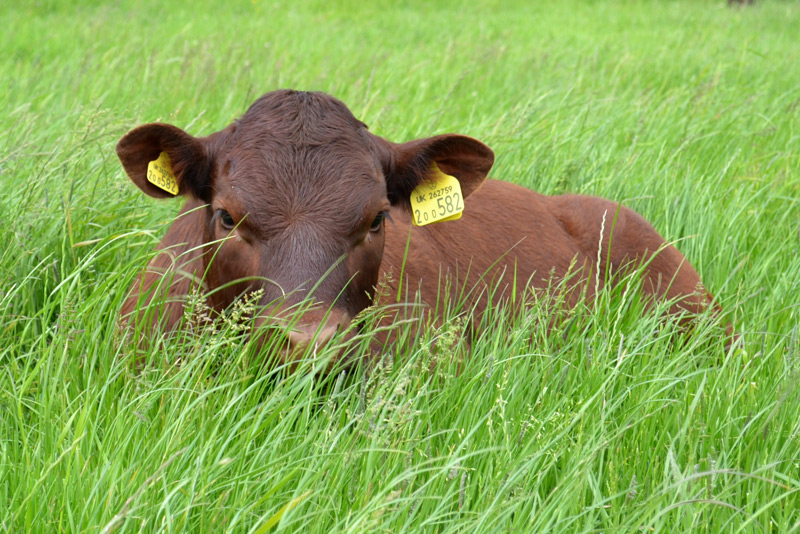We have just completed one of our most dangerous jobs of each year: the compulsory testing of our 200 cattle for TB. Our normally placid cattle appear to know that when someone alien enters their domain and the cattle crush is put in place, they are going to be prodded or poked in some way. Not much fun when a tonne of prime bull decides that he doesn’t fancy going anywhere near the vet who is eagerly waiting to give him both barrels of his injector!
The test involves injecting two serum of TB under the skin of each animal and, three days later, measuring the lumps to see if any react to the test. We always have a few that are inconclusive and have to be retested two months later, but have so far always passed the retest, which is a relief.
Once we have been declared free from TB, we get only 60 days grace on selling any cattle and have to retest any that we want to sell after that. This is where it gets expensive for beef farmers as the vets have a £40 call-out fee and then charge £120 an hour when they arrive on farm, not forgetting that each TB test requires two visits.
TB in cattle was always a West Country problem, but due to the lack of grasping the severity of the problem by the Department for Environment, Food and Rural Affairs (Defra), it has moved rapidly towards eastern counties. It has become the last straw for some farmers around Rye who have decided that the hassle is not worth the reward and have sold their cattle.
Looking back over history and before pasteurisation of milk in the 1930s, 50,000 people annually would be infected with TB, of whom 2,500 would die. A very successful eradication programme was launched to halt the spread of the disease and by the 1980s TB was virtually wiped out in the cattle population, but partially remained in the wildlife population.
Unfortunately, all that hard work has been undone and, since badgers became a protected species in 1992, TB has spiralled out of control. This coincided with our arrival at Lamb Farm in East Guldeford. Seeing a badger in those days was a very rare, not to mention fascinating sight from our one badger sett on the farm. Today, we have nine setts which have had a seriously detrimental effect on the rest of the wildlife on our farm, especially ground-nesting birds and hedgehogs.
Luckily our badgers appear to be free from TB and healthy, but we are under no illusion that if, or when, the situation changes, our lovely Sussex cattle that have taken generations to build up could be wiped out in an instance.
The badger cull in the West Country might not be very popular but it appears that one out of every three badgers in the TB hotspots is carrying the disease. To kill more than 200,000 cattle since 2008 but not address the situation that is spreading the problem always appeared incorrect, especially as it is now showing up in domestic pets.
Hopefully another successful eradication programme has started and we will soon have healthy cattle and badgers again across the UK.
* Simon Wright is a farmer at East Guldeford where he and his wife Anne also run a holiday cottages business. Click here to visit their website
Photo: Simon Wright



